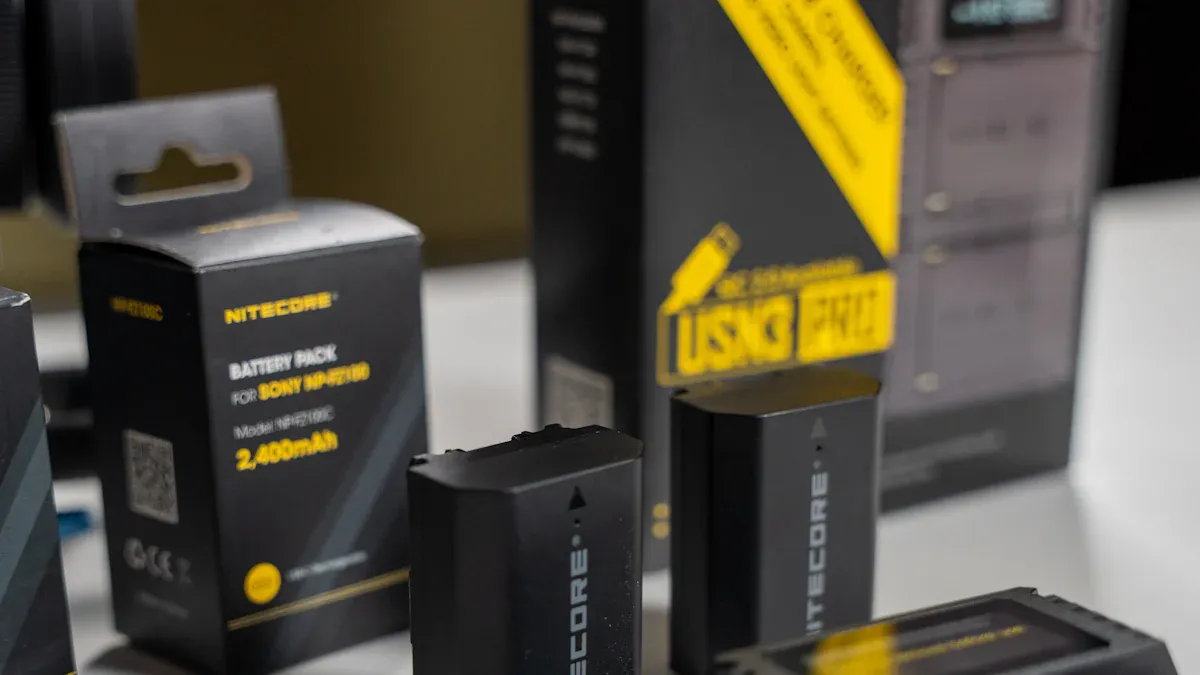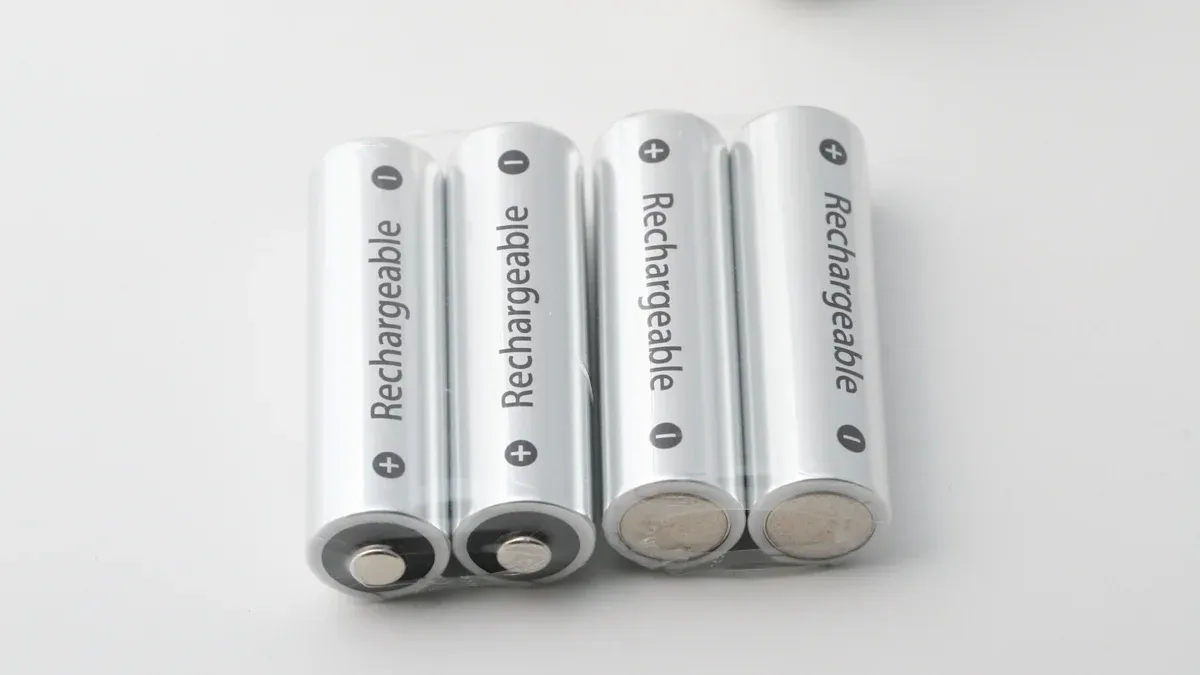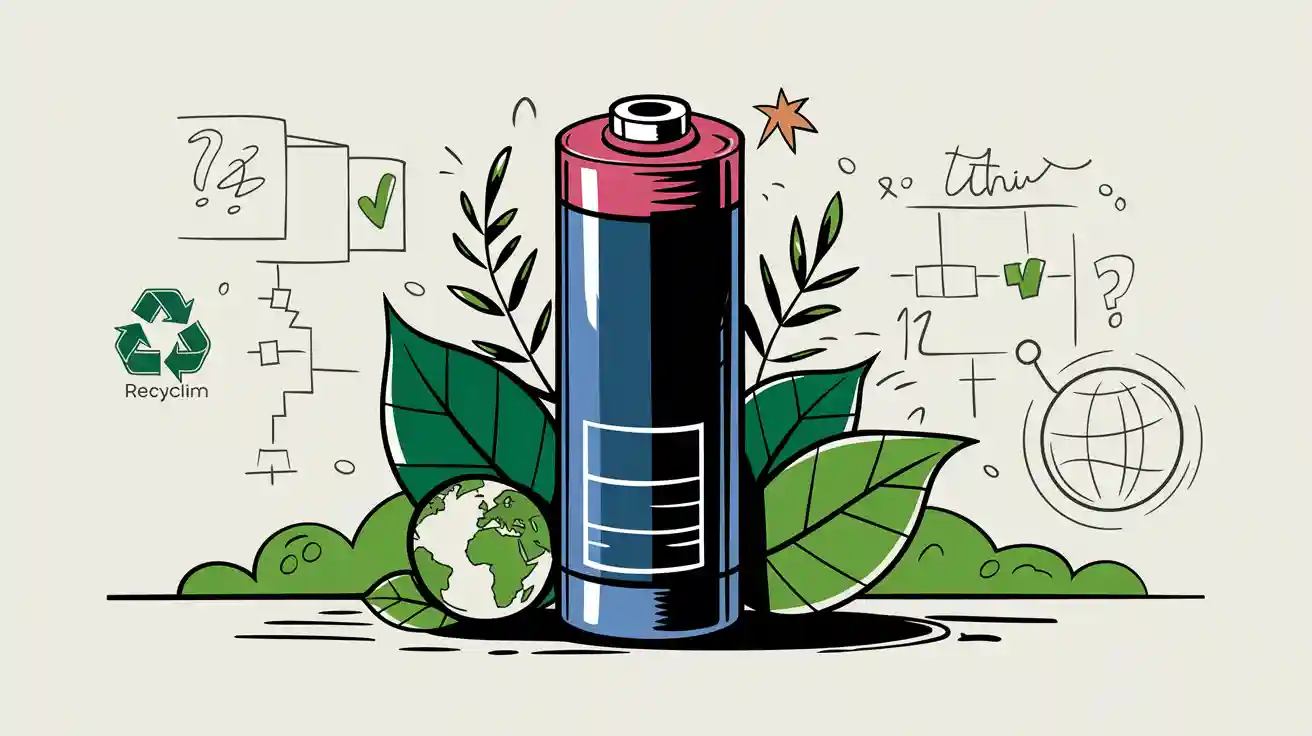Contents

Lithium-ion batteries play a vital role in powering modern devices, but their transport requires careful attention. You must understand the classifications UN3480 and UN3481 to ensure safety and compliance. UN3480 applies to lithium-ion batteries shipped without equipment, while UN3481 covers those shipped with or inside equipment.
Improper handling of these batteries can lead to serious risks:
Flammable electrolytes may ignite if the battery is damaged.
Overheating can cause thermal runaway, leading to fires or explosions.
Mechanical shocks during transport may trigger short circuits or chemical reactions.
Since 1991, over 40 air transport incidents involving lithium batteries have been reported. For example, in 2009, a package of lithium batteries sparked after being dropped, causing an emergency. These incidents highlight the importance of proper packaging, labeling, and compliance when shipping lithium ion batteries un3480 or UN3481.
Key Takeaways
Learn the difference between UN3480 and UN3481. UN3480 is for batteries shipped alone. UN3481 is for batteries sent with devices.
Use proper packaging to avoid dangers. Pick strong materials and keep batteries safe from short circuits during shipping.
Label packages clearly to show they are hazardous. Add Class 9 labels and the right UN3480 or UN3481 labels for safe handling.
Make sure documents are correct and complete. A Shipper’s Declaration is needed to follow rules and avoid fines or delays.
Teach workers how to handle batteries safely. Good training lowers risks and helps everyone handle lithium-ion batteries properly.
Understanding Lithium Ion Batteries UN3480
What is UN3480?
UN3480 refers to lithium-ion batteries shipped without any accompanying equipment. These batteries are classified as dangerous goods due to their potential hazards during transport. They contain flammable electrolytes, which can ignite if mishandled. This classification ensures that proper precautions are taken to minimize risks such as thermal runaway, short circuits, or fire. Regulatory bodies like the International Civil Aviation Organization (ICAO) and the United Nations (UN) have established strict guidelines for their transportation to ensure safety.
Common Applications of UN3480
Lithium-ion batteries classified under UN3480 are widely used in various industries. They power devices like laptops, smartphones, power tools, and electric vehicles. These batteries are often shipped in bulk to manufacturers or distributors for assembly into products. Their lightweight design and high energy density make them ideal for portable electronics and renewable energy storage systems.
Shipping and Handling Requirements for UN3480
Packaging Guidelines for UN3480
When shipping lithium batteries under UN3480, you must follow strict packaging requirements. Batteries should be protected against short circuits by using non-conductive materials. Strong outer packaging is essential to prevent damage during transportation. Additionally, the state of charge must not exceed 30% to reduce the risk of thermal runaway.
Lithium Battery Shipping Label Requirements for UN3480
Packages containing UN3480 batteries must display specific labels to indicate their hazardous nature. These include Class 9 hazard labels and a ‘Cargo Aircraft Only’ label for air transport. Proper labeling ensures that handlers and carriers are aware of the potential risks and can take necessary precautions.
Transporting Lithium Batteries Classified as UN3480
Transporting lithium batteries under UN3480 requires compliance with international shipping regulations. A Shipper’s Declaration must accompany the shipment, detailing the dangerous goods classification. The waybill should also include notations about the batteries’ status. Proper training for staff involved in packaging, labeling, and documentation is crucial to avoid compliance issues and ensure safe transportation.
Note: Mishandling UN3480 batteries can lead to severe consequences, including fires, explosions, or the propagation of thermal runaway across multiple batteries. Always adhere to the established guidelines to mitigate these risks.
Exploring Lithium Ion Batteries UN3481
What is UN3481?
UN3481 refers to lithium-ion batteries that are shipped either with equipment or contained within it. This classification ensures that these batteries are handled and transported safely, as they are considered dangerous goods. Unlike UN3480, which applies to standalone batteries, UN3481 batteries are integrated into devices or packaged alongside them. This reduces the risk of short circuits during shipping but still requires strict adherence to safety protocols.
Common Applications of UN3481
Lithium-ion batteries classified under UN3481 are commonly found in everyday devices. These include:
Laptops
Mobile phones
Tablets
Power tools
Electric toothbrushes
Medical equipment
Their versatility and high energy density make them essential for powering portable electronics and critical healthcare devices.
Shipping and Handling Requirements for UN3481
Packaging Guidelines for UN3481
When shipping UN3481 batteries, you must follow specific packaging requirements to ensure safety. The table below outlines the key guidelines:
Requirement Type | Details |
|---|---|
Inner Packaging | Batteries must be fully enclosed in inner packaging. |
Outer Packaging | Must be sturdy and prevent movement; provide protection against impacts during transit. |
Maximum Battery Count | Include the number of batteries needed to power the equipment plus two extra sets. |
Watt-Hour Limits | No Dangerous Goods Declaration required if total cells are ≤ 20 Wh and batteries ≤ 100 Wh. |
Shipper’s Declaration | Required if watt-hour limits are exceeded; must state ‘Dangerous Goods as per Attached DGD.’ |
Labeling | Each package must have a Class 9 label and a UN3481 label indicating dangerous goods. |
Proper packaging minimizes the risk of damage, which could lead to a fire or other hazards during transportation.
Lithium Battery Shipping Label Requirements for UN3481
Labeling plays a critical role in ensuring compliance with shipping regulations. For UN3481 batteries, you must include a Class 9 label to indicate the presence of dangerous goods. Additionally, a UN3481 label is required to classify the batteries as either packed with equipment or contained within it. These labels help handlers quickly identify the contents and take necessary precautions.
Transporting Lithium Batteries Classified as UN3481
Transporting UN3481 batteries requires strict compliance with international shipping regulations. You must ensure that all packaging, labeling, and documentation meet the established requirements. If the watt-hour limits exceed the specified thresholds, a Shipper’s Declaration must accompany the shipment. This document should clearly state the classification and hazardous nature of the goods. Proper training for personnel involved in packaging and handling is essential to prevent accidents and ensure smooth transportation.
Tip: Always double-check the lithium battery shipping label requirements and packaging guidelines before shipping UN3481 batteries. This ensures compliance and reduces the risk of delays or penalties.
Key Differences Between UN3480 and UN3481

Classification and Definition
Understanding the classification of lithium batteries is crucial for safe shipping and compliance with regulations. UN3480 refers to lithium-ion batteries shipped independently, without any equipment. These batteries are classified as dangerous goods due to their potential hazards during transportation. On the other hand, UN3481 applies to lithium-ion batteries that are either contained within equipment or packed alongside it. This classification reduces the risk of short circuits since the batteries are integrated into devices or secured with equipment.
Classification | Description |
|---|---|
UN3480 | Lithium-ion batteries shipped independently, not contained within equipment. |
UN3481 | Lithium-ion batteries contained within or packed with equipment, such as laptops or power tools. |
Packaging and Labeling Requirements
The packaging and labeling requirements for UN3480 and UN3481 differ based on their classification. UN3480 batteries require robust packaging to prevent short-circuiting and damage during shipping. You must use non-conductive materials and ensure the batteries are securely packed. For UN3481, the packaging requirements are slightly more lenient since the batteries are either inside equipment or packed with it. However, you still need to follow strict safety standards.
Both classifications require proper labeling to indicate the presence of dangerous goods. Packages must display a Class 9 hazard label. For UN3481, additional labels specify whether the batteries are contained within or packed with equipment. These labels help handlers identify the contents and take necessary precautions during transportation.
Safety Considerations
Safety is a top priority when shipping lithium batteries. UN3480 batteries pose a higher risk since they are shipped independently. They require robust packaging to prevent hazards like short circuits or thermal runaway. The state of charge must also remain below 30% to minimize risks.
UN3481 batteries, while safer due to their integration with equipment, still require careful handling. You must ensure the batteries are fully enclosed in inner packaging and secured in a sturdy outer container. The outer packaging should prevent movement and protect against impacts during transit. Following these safety measures reduces the risk of fire or other hazards during transportation.
Tip: Always double-check the packaging and labeling requirements for lithium-ion batteries before shipping. This ensures compliance with shipping regulations and minimizes safety risks.
Compliance with Regulations
Ensuring compliance with regulations is critical when shipping lithium batteries classified as UN3480 or UN3481. Regulatory bodies like the United Nations (UN) and the International Air Transport Association (IATA) have established strict standards to minimize risks during transportation. You must follow these rules to avoid penalties and ensure safe handling of these dangerous goods.
Shipping lithium batteries requires you to meet specific documentation requirements. Every shipment must include accurate paperwork verifying compliance with international standards. This documentation helps carriers and authorities confirm that the batteries meet safety requirements. Missing or incorrect paperwork can lead to delays, fines, or even legal action.
The regulatory landscape for lithium batteries is complex and constantly evolving. You need to stay updated on the latest changes to avoid compliance issues. For example, new rules may affect packaging, labeling, or the classification of hazardous materials. Proper training for your employees is essential. They must understand how to package, label, and document shipments correctly. This reduces the risk of errors and ensures smooth transportation.
Non-compliance with regulations can result in severe consequences. Companies may face significant fines or legal challenges if they fail to meet the requirements. Additionally, improper handling of lithium batteries increases the risk of hazards like fires or explosions. Following the rules not only protects your business but also ensures the safety of everyone involved in the shipping process.
Tip: Always double-check your documentation and packaging before shipping lithium batteries. Staying informed about regulatory updates helps you maintain compliance and avoid unnecessary complications.
Practical Implications of Transporting Lithium Batteries
Determining the Correct Classification
To transport lithium batteries safely, you must first determine whether they fall under UN3480 or UN3481. UN3480 applies to batteries shipped alone, while UN3481 covers those contained within or packed with equipment. Misclassification can lead to severe penalties and safety risks.
Follow these steps to classify batteries correctly:
Confirm if the batteries are shipped independently or with equipment.
Protect the batteries against short circuits using non-conductive materials.
Enclose the batteries in inner packaging that prevents movement.
Use strong outer packaging to withstand impacts during shipping.
Ensure the state of charge does not exceed 30%.
Additionally, when shipping under UN3480, include a Shipper’s Declaration. This document confirms compliance with hazardous materials regulations and informs carriers of restrictions like “Cargo Aircraft Only.”
Tip: Always double-check the classification to avoid delays or fines.
Choosing the Right Packaging and Labeling
Proper packaging and labeling are critical for compliance and safety. Use high-quality materials to protect batteries during transportation. Inner packaging should prevent short circuits, while rigid outer packaging shields against impacts. Specialized materials like cushioning and insulating layers can add extra protection.
Labeling is equally important. Include a Class 9 hazard label and, for UN3481, specify whether the batteries are packed with or contained in equipment. These labels alert handlers to the presence of dangerous goods, ensuring they take necessary precautions.
Note: UN bags, designed for hazardous materials, offer an excellent option for shipping lithium batteries.
Ensuring Compliance with Shipping Regulations
Compliance with shipping regulations is non-negotiable. Regulatory bodies impose strict standards to minimize risks during transportation. Missing or incorrect documentation can result in fines or shipment delays. For example, offering batteries not protected against short circuits can incur fines of up to $15,000. Misclassifying batteries for air transport may cost $30,000.
Violation Description | Fine Amount |
|---|---|
First-time violation | Up to $79,976/day |
Violation causing death or serious injury | Up to $186,610 |
Offering batteries not protected against short circuit | $15,000 |
Offering unauthorized packages | $12,500 |
Misclassifying for air transport | $30,000 |
Failure to prepare batteries for transit | $6,000 |
Stay updated on regulatory changes to avoid penalties. Train your staff to handle packaging, labeling, and documentation correctly. This ensures smooth transportation and protects your business from legal issues.
Reminder: Non-compliance not only risks fines but also endangers lives. Always prioritize safety and adherence to regulations.
Tips for Safe Handling and Transport
Handling lithium-ion batteries during shipping requires careful attention to safety protocols. Following best practices minimizes risks and ensures compliance with regulations. Here are some essential tips to help you handle and transport these batteries safely:
Inspect Batteries Before Packaging
Check each battery for visible damage, such as dents or leaks. Damaged batteries pose a higher risk of fire or explosion during shipping.Insulate Battery Terminals
Use non-conductive materials to cover battery terminals. This prevents short circuits, which can lead to overheating or fires.Wrap Batteries in Protective Materials
Cushion batteries with insulating materials to protect them from physical damage. Specialized packaging materials, like foam inserts, can absorb shocks during transportation.Label Packages Clearly
Mark each package with the battery type, voltage, and capacity. Include hazard labels, such as the Class 9 label, to alert handlers about the contents.Carry Safety Data Sheets (SDS)
Include detailed safety data sheets and handling instructions with your shipment. These documents provide critical information in case of an emergency.Handle Batteries with Care
Use non-conductive tools and avoid dropping or mishandling batteries. Proper handling reduces the risk of accidents during shipping.
Tip: Always store batteries in a cool, dry place and avoid exposing them to extreme temperatures during transportation.
Training your team is equally important. Comprehensive training programs teach employees how to handle lithium-ion batteries safely. These programs cover essential topics like proper packaging, labeling, and documentation. They also emphasize compliance with industry standards, such as IATA and DOT regulations. By equipping your team with the right skills, you can enhance workplace safety and minimize hazards.
Reminder: Trained employees can respond effectively to emergencies, ensuring the safety of your shipment and everyone involved in the process.
By following these tips, you can ensure the safe handling and transportation of lithium-ion batteries while maintaining compliance with shipping regulations.
Understanding the classifications UN3480 and UN3481 is essential for safely shipping lithium-ion batteries. UN3480 applies to batteries shipped alone, while UN3481 covers those packed with or contained in equipment.
Adhering to packaging and labeling requirements minimizes risks.
Accurate documentation enhances safety during transport.
Improper packaging can lead to overheating, short circuits, or thermal runaway. Always use sturdy materials and secure batteries to prevent movement during transit.
By following these guidelines, you can ensure safe handling and avoid costly mistakes.
FAQ
What is the main difference between UN3480 and UN3481?
UN3480 applies to lithium-ion batteries shipped alone, while UN3481 refers to batteries shipped with or inside equipment. UN3480 batteries pose higher risks during transport, requiring stricter packaging and labeling. UN3481 batteries are safer due to their integration with devices.
Can you ship UN3480 batteries by air?
Yes, but only under strict regulations. You must use a “Cargo Aircraft Only” label and ensure the batteries are at 30% charge or less. Proper packaging and a Shipper’s Declaration are also mandatory for air transport.
Are UN3481 batteries safer than UN3480?
Yes, UN3481 batteries are generally safer. They are either contained within equipment or packed alongside it, reducing the risk of short circuits. However, you still need to follow safety guidelines to prevent damage during shipping.
Do you need special training to ship lithium-ion batteries?
Yes, training is essential. You must understand packaging, labeling, and documentation requirements. Regulatory bodies like IATA and DOT mandate training to ensure compliance and minimize risks during transport.
What happens if you mislabel lithium battery shipments?
Mislabeling can lead to fines, shipment delays, or legal issues. For example, offering batteries without proper labels may result in penalties up to $15,000. Always double-check your labels to avoid costly mistakes.
Tip: Use a checklist to verify packaging and labeling before shipping lithium batteries. This ensures compliance and reduces risks.





